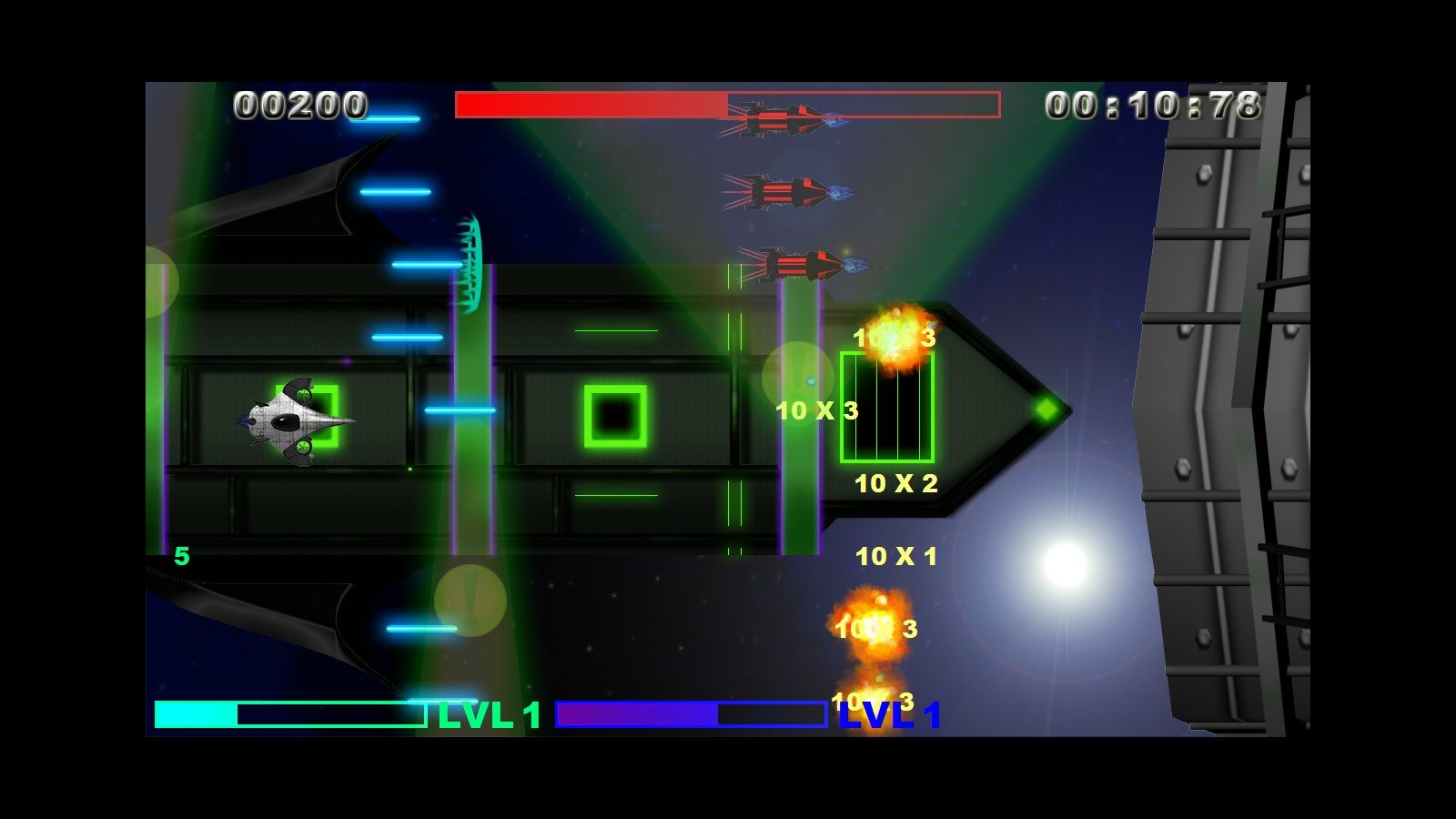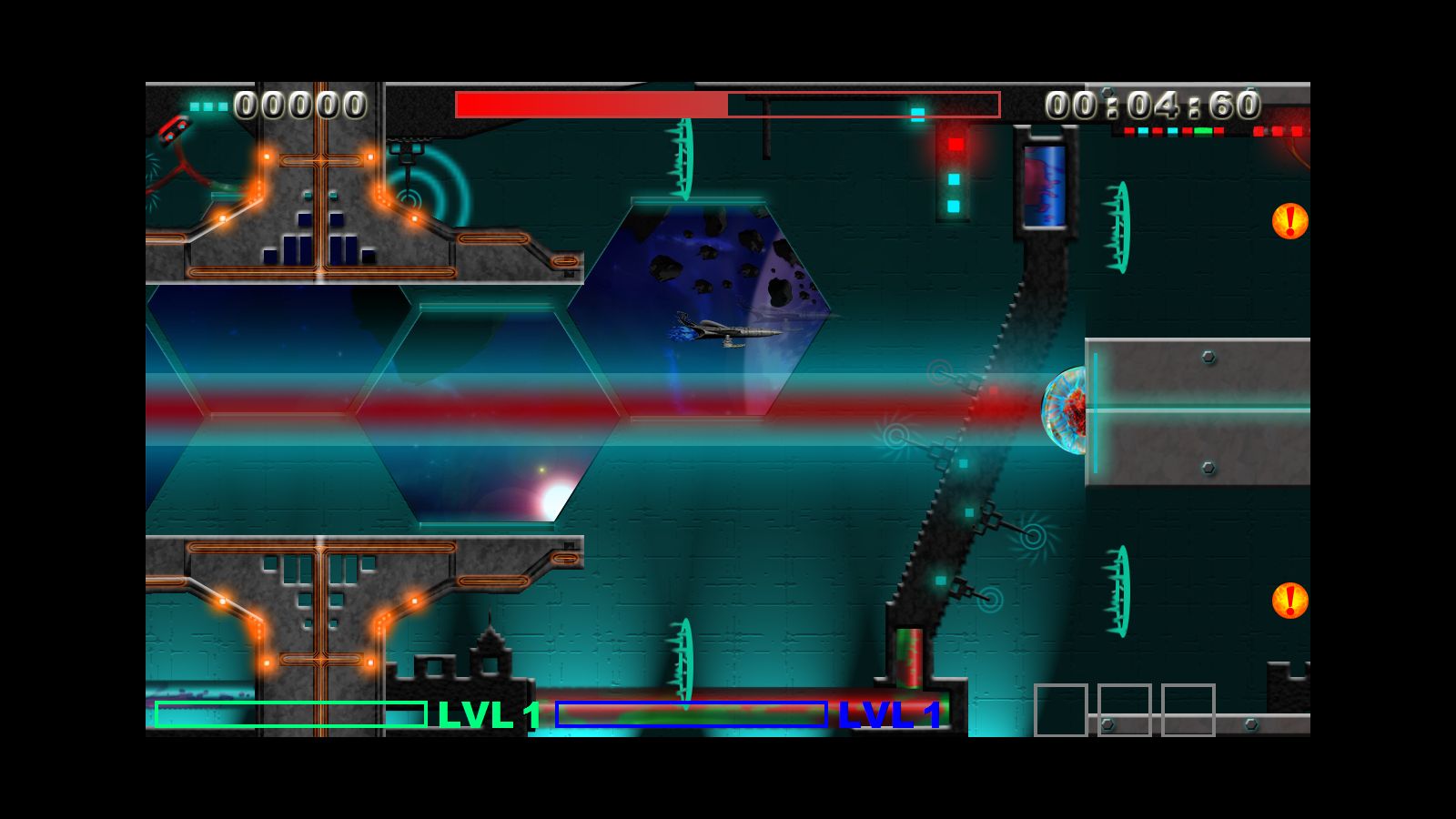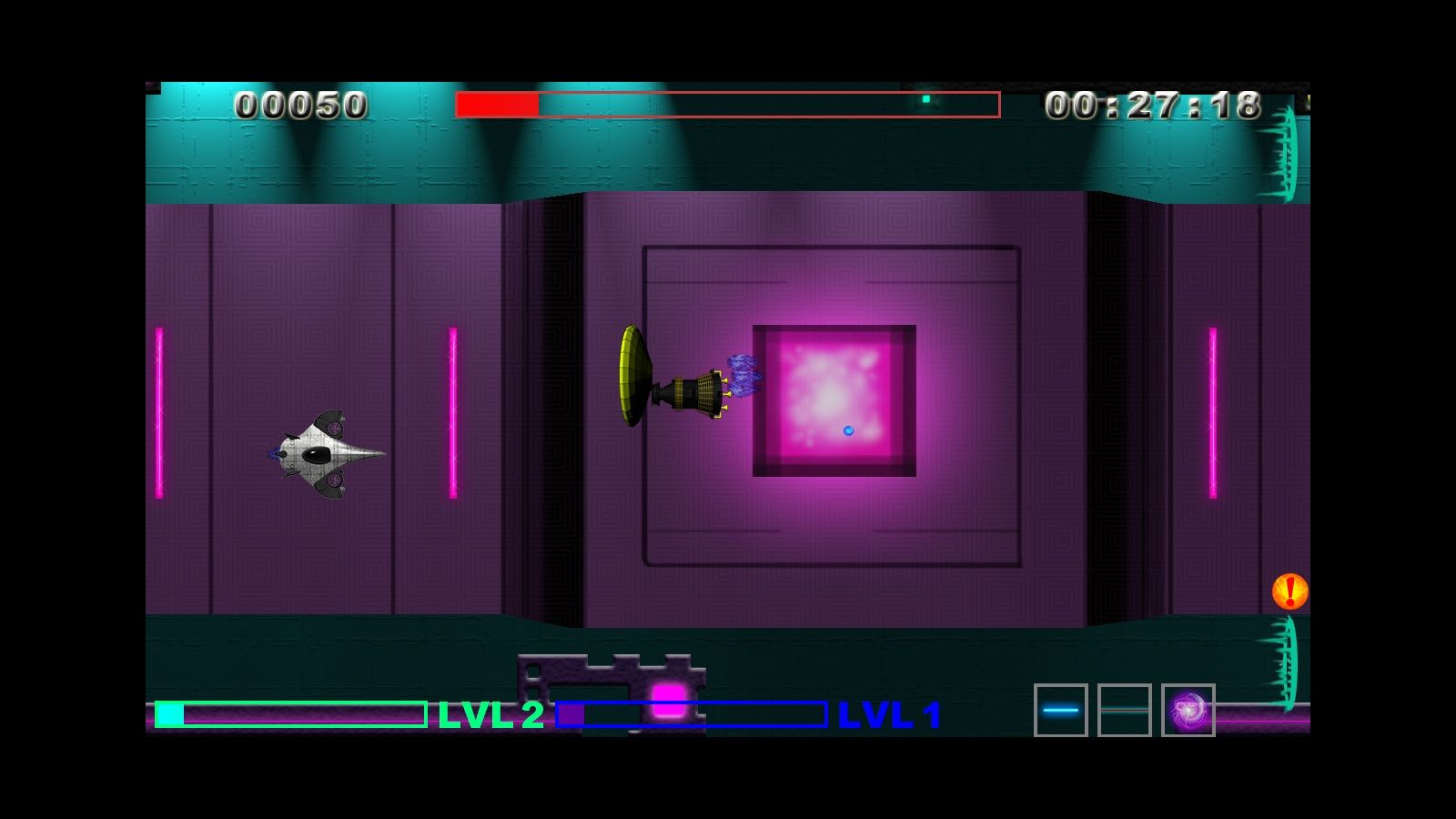Quick Slick Deadly Review
There’s a subtle distinction that you sometimes hear game developers talk about between the words ‘difficulty’ and ‘challenge’. Anything can be ‘difficult’, be it finally building up enough levels to finish off Sephiroth in Final Fantasy VII, or looking for your lost car keys inside a cramped tent. However, only one of these is ‘challenging’. Being challenged means being introduced to difficulty in such a way as to make it fun and engaging. If a game fails to do this, it quickly because difficult simply to be difficult. Case in point, the debut game from Adventurous Productions studio: Quick Slick Deadly.

Quick Slick Deadly is a casual side-scrolling shooter where the player pilots his or her spacecraft past asteroids, lasers, and enemy ships while racking up points. It’s a staple genre that all gamers are familiar with and one which stays alive in vibrant entries like Sine Mora from Digital Reality. In Quick Slick Deadly, we find the basic aspects that we expect: shooting incoming enemies, dodging environmental hazards, and rushing to keep up with the pace of the screen scroll, but it also includes a nice ship-unlock system: completing a certain number of the fifteen levels will unlock two more ship types aside from the starting Fighter class. You can use these ships to play through (essentially) the same levels again, only using a very different style to make it to the end.
Unfortunately, the implementation of these elements leaves much to be desired. Graphics look around twenty years old, and although there’s a decent variety of enemy types, there’s no overarching aesthetic to tie the game into a pleasant visual experience. More troublesome is the difficulty curve: enemies and bullets move so fast and fill the screen so quickly that avoiding collision is a big challenge from the get-go. However, Quick Slick Deadly isn’t content simply pounding a nail into your coffin: it adds in a few layers of duct tape as well, in the form of incredibly strict mission completion requirements. In other words, there may be some enemies or obstacles here and there that don’t instantly kill you, but the requirements for completing each mission are so narrowly defined, even at the lowest bar, that each enemy may as well be a one-hit-killer. Hits to your ship drain your points, and the game won’t let you proceed until you complete the mission above a certain score. For most missions, this means that a single hit or a few missed enemy shots is more than enough to guarantee that you fail the mission.

The difficulty of Quick Slick Deadly automatically limits the game’s appeal to those who are gluttons for punishment, but there’s an added hitch that might dissuade even the hardcore: extremely short levels. Most levels are completed on the order of between twenty and thirty seconds, and that’s only assuming you survive until the end. Put shortly, most gameplay in Quick Slick Deadly consists of trying the first ten seconds of a level over and over again, losing at the very first enemy hit or missed ‘boost loop’. Many of the obstacles and enemies must be dealt with immediately. For example, many enemies fire their one-hit-kill weapons as soon as they appear onscreen, and so the only way to shoot them down is to camp at their upcoming location, killing them right as they scroll in front of you. The game thankfully helps you with this task by giving warning flags at incoming enemy locations, but the net result is that levels must be memorized. Playing through a level in Quick Slick Deadly involves playing the same moments over and over again until you memorize the location of every enemy and have a set routine of actions to take. I spent a good half-hour on a single twenty-five second level, playing through the first few seconds about fifty times in a row before finally being able to make it through hit-free with every necessary power-up collected.
All this could be overlooked if not for one particularly glaring fact: you quickly realize that there is, in fact, only one level. Quick Slick Deadly has maybe ninety seconds of actual scrolling: each thirty-second level either starts you a little further along in the scroll or starts you in the same location, only with a few new enemy spawns and new win conditions. It’s a real shame, because Quick Slick Deadly contains a few basic gameplay mechanics that, in another game, might be put to good use. Take, for example, the alternate weapon mechanic. When playing as the Fighter class, each enemy you shoot leaves a particular icon in a three-slot tracker. Fill all three slots with the same enemy icon, and your ship gains a powerful alternate fire depending on the icon. This mechanic alone could make for some fun gameplay: going through levels, you could be careful to destroy only certain enemies, picking out the three-in-a-row that give you the alternate weapon you want. Sadly, in Quick Slick Deadly, levels go by so quickly and have such harsh restrictions for completion that you’ll never be able to even consider putting alternate weapon choice to your advantage. Aside from the single level where completion is dependent on using the mechanic, the possibilities are simply never realized.

There’s a similar situation with speed boost mechanic. Flying your ship through glowing blue rings will help it store up fuel which can be used for a quick speed boost. It sounds useful for quick getaways, but in practice, the levels are so completely chock full of insta-death enemies that getting a speed boost turns out to be the last thing you want to do, and the player paradoxically might even start steering clear of these power-ups to avoid making the screen go faster.
The news isn’t all bad, however. One interesting mechanic is the Survivor class’ leeching ability, which lets the player charge up energy by flying close to enemy attacks, giving the player access to special shield and weapon abilities. This provides a unique incentive to stay close to the line of fire, without actually getting hit directly. Sadly, the extreme brevity of the levels, and the fact that there is only one level at all, means that the player never has a chance to really put this ability to use. Quick Slick Deadly simply feels half-finished, and more importantly, feels like it’s missing a good strong playtest.

There’s one defence that, on its face, might seem to make up for all of the game’s deficiencies, and that is its three-dollar price tag. After all, for only three dollars, what could one possibly expect from a game, right? But this actually brings up a good point: inexpensive casual games can’t be compared to modern studio-produced games, but this should be more a question of content than quality. There are great three-dollar games out there that are appropriately small; even a well-done simple Pong game or Solitaire can be entertaining. Quick Slick Deadly simply doesn’t have the entertaining core to make it worth playing. For casual gamers who consider all difficulty to be fun and don’t mind goofing around with bad games, you can give it a try. For all others, you may want to look elsewhere.
